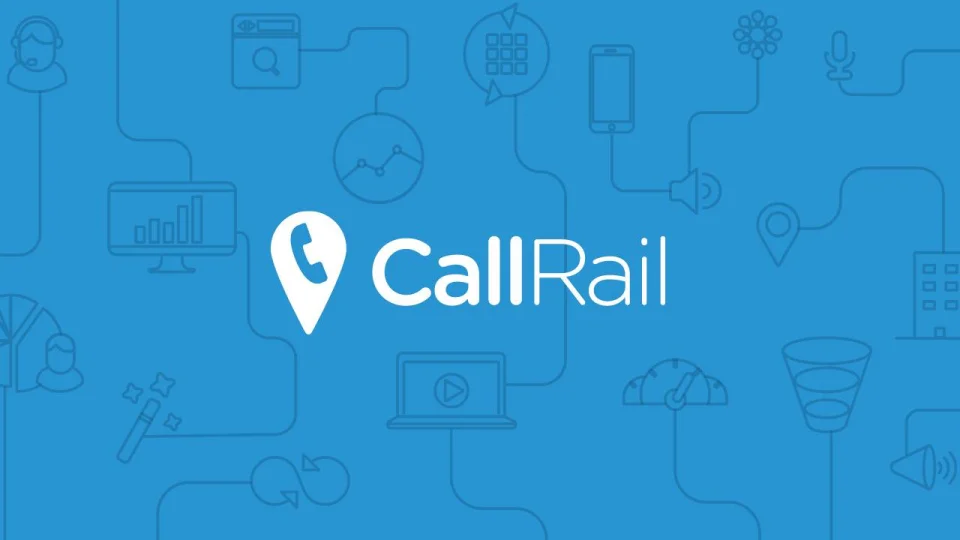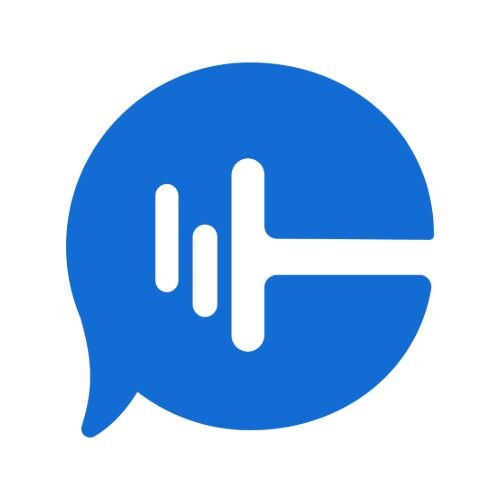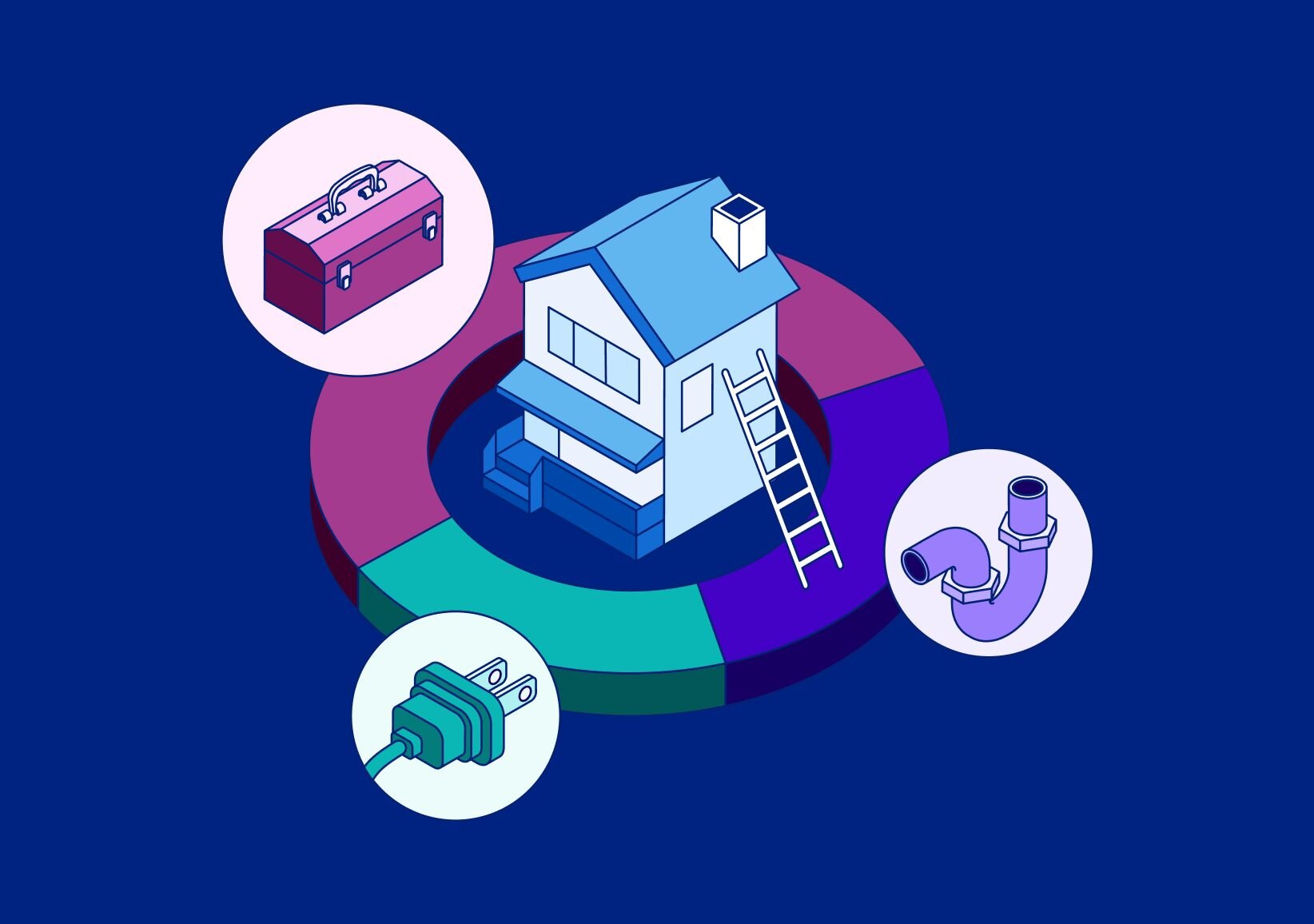Introduction
Hello, everyone. My name is Michael Saba. I’m with the content and marketing team here at CallRail. So if you’re familiar with the CallRail blog, you might see like, week after week, we like to do case studies with our users, which is where usually I’ll call up a user at CallRail and kind of get their story, what’s their business, what’s their day-to-day like, how do they use call tracking, and how does it benefit them, and we’ll write that up into a feature post that we put on the blog.
So for this webinar, we thought we’d do something a little bit different, rather than just me doing the case study call over the phone, why don’t we do the actual case study interview with a CallRail user, live and direct, for all of you wonderful people in the audience. So without further ado, Adam, would you like to introduce yourself?
Thanks for having me on the webinar, this is really exciting. My name is Adam Arkfeld. I’m the president and founder of ParaCore. ParaCore is a pay-per-click lead generation agency. We specialize just in paid ads for a variety of types of businesses.
Our main focus is Google Adwords and Facebook Ads, which leads into a couple of other platforms like Instagram, LinkedIn, and platforms like that. But Adwords and Facebook are obviously the largest and that’s our specialty. And that’s what we do for our clients all day.
– So, Adam, you’re the founder of ParaCore. How did you get into the agency digital marketing business? Was this something you studied and has been your life’s passion or did you kind of come to it after the fact? What was that journey like for you?
– No, I had absolutely no intent to be an agency owner. It definitely was not my life’s passion, and I actually never worked at an agency before starting an agency, which was a dumb idea. But I actually graduated and then worked in real estate for a bit. And then when the crash happened, in 2007, I was working in real estate and then just decided building websites on the side, to start building websites.
And so, for the first five or six years of the agency, we built websites that gradually became more and more and more complex. And then about two and a half years ago, we switched over just to paid media for a variety of different reasons, but now we just focus exclusively on pay-per-click advertising. But that’s basically how I got into it, totally fell into it, did have no idea what I was getting into.
– Got you. So what’s the value prop for your clients? Like if you’re trying to wine and dine someone and bring them on board, what’s the elevator pitch to say, “Hey, you should join up with ParaCore, because we’re going to do \X, Y, and Z for you?”
– Yeah. We really have two different kind of value propositions, really two areas that we focus. ParaCore itself does paid media for a lot of different types of clients. Since we have a web development background, we just have an incredibly data-driven approach to what we’re doing, so installing pixels, making sure all the metric tracking is there, and then reporting on that and interpreting those analytics.
So when we install pixels, it’s one thing to get all the data, but it’s another to bring it in and then basically elevate it to strategic conversations versus having a reporting call where it’s like, “Hey, check out these, you know, 20 slides,” like clicks per up, or clicks per down, or cost per click. So we actually, you know, to give you an example, on reporting calls, we only look at like two slides, they’re called insight slides, and we just basically talk strategically, and then, we send over the full report that has all the data to support it.
But I think being strategic partners is really important, and so we spend a lot of time reporting with our clients, and it’s a very intimate relationship. The second thing is we have an entirely different brand under ParaCore, we’re going to be rolling out more brands. But the first one is called Outdoor Adventure Marketing where we do just paid media advertising for outdoor adventure companies. So if you’re going to a destination and you want to ride ATVs, or go skydiving, or go scuba diving, we have an entire brand that’s focused just on that vertical.
So if anyone’s listening and is in that vertical, it’s a perfect industry for paid media advertising, and so we’re focused there as well.
– Very, very cool stuff. So getting to the meat of this discussion, call tracking and all of its benefits, how long have you been using call tracking technology, either with CallRail or pre-CallRail? How long has it kind of been a part of your stack?
– We started using it very early on, so probably two and a half, three years. Because we realized very early on that when you’re running campaigns, the landing pages or websites with phone numbers, that the AdWords call tracking metrics and information is just not enough when it comes to establishing relations with clients and talking about ROI.
So we started it very early, and we started with CallRail. I don’t remember exactly why we’ve started with CallRail specifically. I mean, it probably just looked like a great solution or it was referred to me probably, [inaudible]. So we’ve been using CallRail for a number of years, I think two and a half or three years.
– Right on. So with how you use call tracking, is it primarily in a sales capacity, are you monitoring inbound sales for your clients and helping them with optimization on that front or you have other clients who like to use it just for call-center applications more generally, maybe they have customer service desks and they want to use the call recording feature?
What does the application look like for you?
– Ours is primarily for sales, and it’s mainly related to the advertising efforts that we employ. So a lot of our traffic is being driven to landing pages where we’d have our phone number form very front and center. And that activity is then people call the phone numbers, then they’re tracked, and then we listen to it and we see the metrics.
There are a number of clients that we work with that are maybe a little bit larger that use it for their entire organization. As a lead gen company, we don’t necessarily report on all of that activity if it’s coming from organic or coming direct, because we just really focus very, very specifically on PPC. But with that being said, when we’re listening to our calls especially, and we listen to basically every call that comes through our CallRail platform, if we see opportunities for customer service improvement, we will absolutely let our clients know.
Because it’s funny, I mean my employees know that the employees that our clients ask is almost better than the owners, because they’re listening to them, talk to customers all day long. And so we call them opportunities for improvement or learning opportunities where I’d say, “Hey, like, they’re saying that you don’t even offer this service,”or, “We heard with one school that we work with locally that they were actually referring students to another school a competitor, either intentionally or unintentionally. I don’t really know what the situation was, but we found that out through call tracking.”
And that’s actually happened a number of times. So just having call tracking from a customer service perspective has helped our clients dramatically, very dramatically. We had another instance where a guy’s call flow system was set up completely wrong, and he didn’t even know it. And by listening to the calls, he’s like, “Oh, they’re going to the wrong person,”and then he made the adjustments and fixed it. So it’s helpful, for sure.
– Interesting. Yeah, definitely, like opportunities for learning and improvement there. How do your clients like to interact with the call tracking data that you’re presenting to them? Is it just you guys kind of like sync it all up with…you have a central CRM, and then you issue weekly, biweekly, monthly reports? Or do you have users who like, you know, they want you to set up a login in CallRail so they can kind of jump in and look at the numbers on their end?
What does that look like for you all?
– I would say the tolerance is definitely different for each client, but most of them are not getting into CallRail on a regular basis. A lot of times if they’re a larger client, they many times want access to it, like just maybe spot check or have access that they needed, but we run all of our reporting through Google Data Studio, so we will basically bring the data into Data Studio and then report on the calls.
There are times when they want like notifications or want to send them a recording just so that they kind of know what’s going on in a more real-time manner. But most of our clients are not logging in on a regular basis, because we do that. But it depends on how savvy and how into the marketing they are.
– I got you. Yeah, so a more old-school client would definitely be happy to just be hands-off and let you handle the technical stuff.
– Yeah. They don’t even understand it many times, which is okay. It can be a little bit complicated, but that’s definitely true, yeah.
– So what would you say is like the biggest benefit that call tracking, not necessarily for individual users but from like a top-level agency perspective, what would you say is kind of the biggest benefit that CallRail’s call tracking technology has brought to your business, either in terms of optimization, streamlining your processes, or you could say, “It saved us X number of hours,”what’s got you hooked basically?
– Yeah. And we are definitely hooked. If we had a client that we were working with on the sales side and they said they were not open to call tracking, I probably would not work with them, solely because the amount of data that comes through the call tracking is just really critically important for us to understand how our advertising is performing.
So if someone says like, “Hey, I have this vanity number,” like lawyers say that a lot, or you know, “I just don’t want to use it for whatever reason,”I would probably turn away the business, because I know that half of my lead gen performance would not be tracked correctly and I wouldn’t be able to demonstrate that to the client when we’re having conversations. So when you say hooked, it’s definitely one of the most integral parts of our agency, for sure.
So that leads to like, “What’s the benefit?” Like, I’d say probably the biggest benefit is the data and us being able to speak intelligently and also learn what’s working. So we’re running all this traffic to a landing page and someone’s saying, “I really want to run it on my website,” which is like a common conversation that we have. We don’t get into this like argument about it, we just say, “All right, great.Well, we’ll run it to your landing page, we have this data for that, and now, we’re going to run it to your website for the next 45 days, and we’re going to determine which one is the winner.”
So, you know, you never bring an opinion to a data fight because it doesn’t matter what your opinion is. And it really helps the account management environment when you don’t have to have opinions combat against each other, which is very common in agencies. We just say, “All right, well, that’s great, like, based on our experience, that might not be the best approach, but we’ll run a test and then we’ll decide.”
We’ve learned crazy things from ads that we just thought were terrible and all sorts of other things. We’ve learned a lot from that and actually gained insight where we thought we wouldn’t before, but then it also just helps like settle a conversation. So I would say that that data is one of the most important parts. And then what that leads to is it leads to client retention.
So I think I was mentioning to you earlier, you know, we use the data from CallRail to talk about reporting and, you know, be the experts in the field. And so, for ParaCore, we haven’t lost a client in six months, which is a long time for paid media clients because, like, we don’t have long-term contracts. So for example, like, someone can fire us today, and they would just be gone, and they would be a lost client, right?
So we do month-to-month. We are not the cheapest PPC agency in town, so people can leave us very easily. But not losing a client in six months and have a retention like that, it’s not necessarily like we’re taking the data and doing a bunch of optimizations in AdWords, which we are, but the real benefit is we don’t turn over clients. And a lot of that is because of the data we’re pulling from CallRail.
So that’s like me, high level as the business owner, keeping clients is much more important than trying to find a bunch of new clients.
– So yeah, you can kind of like break the benefits down into two buckets. Like, you have the individual optimization benefits you’re bringing to clients in terms of, “Oh, I’ve increased your call volume by this much or your lead conversion by this much,” but then also, from a bigger agency perspective, you can say, “Hey, this helps our business because not only does this help us prove the effectiveness of the work we’re doing for our clients, but because of these better outcomes, we’re then keeping our clients for longer, which means more revenue for you.”
– Yeah. You know, when you have…really, when we’re looking at leads, you know, we’re typically looking at three types of leads, it’s form submissions, phone calls, and online purchases. And the online purchase and the form submissions have been easy to track for a very long time, but the phone calls are confusing for a lot of people and a lot of clients as far as like in the stuff that you can do.
I mean, CallRail’s caching system is so amazing, we sometimes are confusing ourselves on whether or not we’re cached or seeing the right numbers. But it’s incredible, yeah. It’s just a major pillar for tracking the conversions.
– Very cool stuff. So in a broader big picture here, can you walk us through an example average campaign you would run for a client would be and where does call tracking fit into that equation in the services you do?
– Yeah, do you mean like, what does the process look like?
– Yeah, yeah.
– Yeah. So, I say the average campaign for us, a lot of our campaigns are lead gen campaigns where we’re trying to get someone to take some sort of action, so that’s either calling a business or filling out a form completion. So we’re running a ton of traffic, for example, we have a large legal client in town, we’re running a ton of traffic to landing pages, and they definitely prefer phone calls, although we do have form submissions.
So we run it to, like we use Unbounce, that’s our landing page hosting provider. We run all the traffic to Unbounce, we set up the tracking system on the Unbounce page with CallRail, and then we just run website pools normally so that we know how long someone’s been engaging with the website, if they come back and they’re retargeted.
But it’s important for us to actually set up a tracking on the landing page and then also the website using a website pool so we can integrate it with AdWords, which is critically important. We found that if we’re not using website pools for almost all of our accounts, the amount of data that we get is just far less than if we are. So pushing those conversions back into Google Ads because you have a website pool set up is really helpful.
And then, basically, I mean, there’s not that much to do. I mean, you install the tracking script, you set up the client in your CallRail account, and then you watch the data flow in, is kind of what it comes down to. So the nice thing is that CallRail is really easy to set up, although some of the features are pretty powerful and sophisticated, but it’s not the most complicated process to get it set up.
– Good stuff, yeah. So let’s dig into the features a little bit. What do you like the most about using CallRail or I guess a better way to phrase that would be like what features bring the most value to your business and get the most day-to-day use?
– Yeah. The features that we use the most right now are, tagging is used extensively in our business. When we have people listening to a lot of calls, we have a very strict and refined tagging set that we use, so it’s like opportunity, missed call, repeat call, or existing customer, you know, things like that.
So there’s only like six very explicit tags I believe. And tagging all the calls and then being able to run reports on those tags. So that makes our reporting a lot easier when we have all the tags set up. One area that we’re experimenting with is your auto-tagging feature, which as the call is being transcribed, and then you listen for certain words. So in our case, it’s like “card,” “credit card,” things like that. And then it auto tags it.
And we just label the tag as “Auto tag” so that we know that it’s been automatically done, but that, we’re hoping, is going to really reduce the amount of effort it takes to tag calls or give us insights before we even start listening to them. So for us, tagging is very important. And then, the AdWords integrations are just critically important. So for a while, we were using single phone numbers that did not have a keyword pool.
And logically, the single phone numbers made a lot of sense. They were kind of easy to understand as we’re creating landing pages and putting them in different areas. But then when it came to how much data can we get and pushing that back into Google Ads, we need to start using website pools, and then integrating with the Google Ads standard integration and then the call integration. So I think, for us actually, one of the biggest revelations or benefits was using the website pool and how much data is pulled over on both sides from using the website pool along with the Google Ads integration has been very powerful and makes life really easy.
– So for these integrations, have you just used the native out-of-the-box ones, or have you all cooked up any special stuff using the CallRail API?
– We haven’t done anything special. We have a developer on staff that does a number of things, like webhooks, and like Zapier, and things like that. We haven’t done anything super custom, but the other ones that we use are, we’ll set up Slack for notifications so that we can kind of keep a pulse on what’s going on with certain clients.
We have started experimenting with the Facebook Ads integration, which is really interesting because that’s just a whole new world as far as being able to pull phone calls into Facebook through your Facebook Ads integration. So we just started working on that recently. And I would say those are the most important ones.
I mean, the ones that fit into our ad platforms are, by far, the most important ones.
– Right on. Yeah, I mean, that is something we hear time and time again is that, you know, CallRail does have an API, for those in the audience, CallRail does have a very powerful API that you can use to custom code pretty much any sort of solution you would want to. But we also pride ourselves on having great developers and really great product partners who have helped concoct these great just out-of-the-box integrations that, “Okay, I need to hook it up to Marketo,” one click, it’s good to go.
I don’t have to mess around with tons of lines of complicated codes. So yeah, it’s great to hear that, you know, this is definitely one of the things that CallRail is very popular for.
– Yeah. And those have worked out really great. The one feature that we haven’t quite dug into yet is the pushing the value back in the AdWords feature. So with the AdWords integration you guys just released maybe 30 days ago or something, the ability to push a conversion value for each call back into AdWords after a specified period of time.
So that’s amazing because we listen to phone calls for purchases. And so if we have a lag of like a week, we can listen to the calls, we can put in the value, and that value will be pushed over to AdWords. That sort of data allows us to talk about ROI and goes back to the whole client retention thing of, you know, “Hey, these keywords in AdWords and this campaign is actually generating this ROI.”
And then you know exactly how much money you’re generating, which is sometimes very hard to do with all these disparate systems. Aggregating the data together can be really hard. So there are some amazing features.
– Awesome. So in terms of the clients that ParaCore works with, can you think of a recent anecdote or an example where you were able to deliver, to engineer a really good result for one of your clients and you felt good about like, “Oh man, this is like a great example of the work ParaCore does,”and hopefully, call tracking was a part of that journey?
– Yeah. You know, there’s one client that really stands out to me when I think about this. And we actually just took them over last year, they’re a law firm that runs a fairly substantial spend, you know, into the six figures per month, and they were kind of managing the account in-house.
And I just knew, based on looking at the account and doing a bit of an assessment, that there was a lot of money to be saved in the account. So just kind of on the strategic side, as an agency, I knew that we could do really well for them. However, what I also knew is that they got a ton of phone calls and they needed to establish a baseline cost per lead and ROI, and then that would actually allow us to demonstrate our improvements.
So one thing that can get very fuzzy in our industry is, when we take accounts, if they don’t have conversion tracking in these systems set up, a lot of times, clients might go off with gut feel, like the amount of phone calls they receive or just like, you know, “Sales were up last month, but now they’re down this month, so you guys are ruining my business.”
If the tracking is not there, then it’s kind of like this really like gut feel conversation, which is hard. So when we take over an account, we typically will make minimal changes to the actual structure of their AdWords account and we’ll install all the tracking. So in this case, obviously, CallRail, they set up their own account in CallRail. And then, we’ll allow it to run for, you know, 30 days, 60 days while maybe we’re building some landing pages or doing another campaign on the side.
And it started to aggregate the data. And with this particular client, we actually saw that their cost per lead was a certain number, so it was I think around, you know, $400 or $500 per lead. And then after making the changes and making our campaign adjustments, and actually we made one adjustment, for any AdWords or PPC advertisers out there, this one adjustment, it took 5 seconds.
– Pro tip incoming.
– Yeah, this is like a pro tip. So if you’re watching this long, this is where it gets amazing. No, but the one adjustment we made was we changed the campaign from manual bidding to maximize clicks, and it literally dropped the cost per lead 75%, they got 4 times more conversions. And anyone that runs AdWords campaigns knows that that’s just literally a five-second change in the account.
But they were hitting budget, which is important to know, they had very broad keywords, which is also very important to know, and then we just switched it to maximize clicks. And so what I was saying before is we don’t necessarily run the optimization off of CallRail many times, like we do that based on data we have on other platforms, but CallRail showed us and gave us the data that we needed to know that this 4x better leads just with one change.
And so that’s been a really powerful, you know, story for them and also for us. And those things don’t happen with every client, but that’s just one where, without a system like CallRail or some sort of call tracking system, you can like move mountains. But if you don’t have the data to show it, the client may not even see it.
And that is really demoralizing, as a paid media agency, when you think you’re doing great work and then someone’s like, “Oh, you know what, I was out of town and I only got four calls.” And maybe they missed 15 calls and they just didn’t even know it.
– Yeah. I mean, that’s great because that’s something we hear so much. I mean me, doing the case studies, and then, also, the users we interface with is that, you know, there’s this sense that like, “Man, there’s all this money that’s coming in through my phone calls, but I have no way of tracking it and I have no way of knowing what’s effective and what’s not.Like I kind of just have to go with my gut.”
So having the tools, especially for you, as an agency, to definitively say like, “Hey, this campaign we ran produced you this many leads, this many good quality leads by driving this many phone calls.” I mean, not only is that a huge win for the client, but that’s a huge win for you in terms of your value prop.
– Yeah. I mean, it establishes trust and it just builds the relationship so much deeper. And so, you know, it sounds kind of cliche or lame for a PPC agency to say it, but establishing the ROI and being able to definitively report on that is just very, very, very important.
And CallRail allows us to do that, at least for us, in the call tracking realm, which can be fuzzy in other instances where you don’t have a call tracking system.
– Right on. Well, that seems like a pretty good note to wrap things up. Let’s take it to the audience, let me see if we got any audience questions coming in here. Okay. So, okay, Chris wants to know, “What’s the weirdest client you’ve ever worked with?” I guess weird is loaded, so maybe don’t name them directly, but just give us like a rundown of what the business was.
– Man, we don’t work with very many weird clients. I feel…well, no, I can’t even. You know what, this is probably a G-rated webinar, I can’t… All right, let’s just put it this way, there’s a whole industry of businesses that you can’t talk about on webinars like this that are public.
So we get approached time to time from those types of clients, and sometimes they’re legit and, you know, you can work with them, like morally be fine about it. It’s just like kind of a gray area. But I don’t have any like super weird ones, I’m sorry.
– That’s totally fair. So I think this will be a good note to end it on. I’m going to put a poll in the chat where you can share your thoughts on the webinar. Adam, thank you so much for joining me for this chat. So this is Michael Saba, with CallRail, callrail.com, check us out for all your call tracking needs.
And if you’re in the market for some PPC and lead gen pros, you should check out the fine fellows over there at ParaCore. Adam, give them the pitch one more time.
– Yeah. We do lead generation for companies that want to scale and grow quickly, that want to grow beyond what they can do organically. So if you’re running AdWords, Facebook Ads, Instagram ads, or want to run those, that’s our domain of expertise. We also do quite a bit of landing page optimization, which we didn’t talk about, but that’s ParaCore.
– Right on, paracore.com. Adam, thank you so much for joining me for the first-ever world inauguration, webinar, case study. We’re breaking down barriers, like blazing new paths here. This is new.
– I love it, yeah. It’s never been done before, never been done. It’s great.
– Heck yeah. All right. Well, Adam, thank you very much. I hope you and the rest of the team have a great rest of your day. And thank you, everyone in the audience, for watching.
– Thank you.
– Cheers. And now, I have to figure out how to turn this…okay, wait, wait, wait.
– I’m still here.
– Oh yeah, we’re still here. We’re still here.
– Still there?
– Still rocking. I don’t know how to turn this dang thing off. This is what I was saying when I booted this up that this webinar program makes me feel like a grandpa, and everybody gets to see this now. Yep, yep, yep, yep, yep.
– It’s what happens when it’s the first time, you know.
– I know, yeah. This is, yeah. Okay. I think… – [inaudible] doing this.
– Yeah. I think I’m just going to close the program down, and then, Adam, I’ll give you a call.
– Sounds good. Thanks.
– Cheers, everyone.












